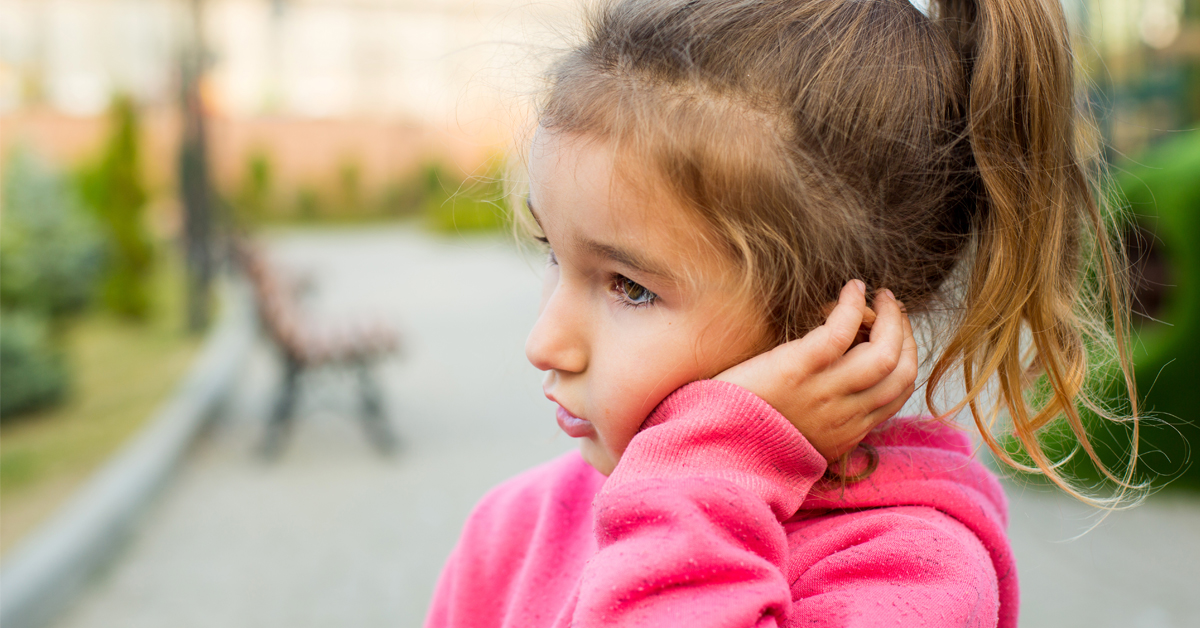It’s that time of year when it seems like kids are constantly getting ear infections, and because they can happen so often, you may wonder if ear infections are contagious. Keep reading to learn more about ear infections so that you can be prepared for the winter season.
What Is an Ear Infection?
An ear infection is inflammation of the middle ear, usually caused by a bacteria that causes a build-up of fluid behind the ear drum. Children typically develop ear infections after developing upper respiratory symptoms such as a runny nose, cough, or sore throat.
Children are more likely to develop ear infections for several reasons. First, their eustachian tubes, which connect the inner ear to the throat, are smaller and more level in children, making it difficult for fluid to drain out of the middle ear. Secondly, children often have weaker immune systems and do not fight off bacteria as well as adults, leading to more frequent ear infections.
How Do I Know if My Child Has an Ear Infection?
Children often show signs that they may be struggling with an ear infection. Here are seven common signs and symptoms of an ear infection.
1. Tugging or Rubbing the Ear
Ear infections can be painful, and babies and toddlers may not be verbal enough to tell you they are experiencing pain. Many babies and toddlers will tug, rub, or swat at their ears to relieve some of the pain and discomfort associated with an ear infection.
2. Difficulty Sleeping
When children have an ear infection, the pain can often become worse with lying down. This is because lying down causes a shift in the middle ear pressure and the fluid behind the eardrum, resulting in discomfort that makes it difficult to sleep.
3. Ear Drainage
Ruptured eardrums can occur in children with severe ear infections. If this happens, you may notice a thick, yellow, or bloody fluid coming from the ears. Ruptured eardrums may be painful, but they are usually not serious and will heal in a few weeks without intervention.
4. Difficulty Hearing
Ear infections cause a build-up of fluid behind the eardrum, which can result in temporary hearing loss. If your child is not responding to their name or their hearing has decreased, they may have an ear infection.
5. Crying More than Usual
Many children with ear infections cry more than usual due to the pain and discomfort associated with ear infections.
6. Fever
Some babies with an ear infection may develop a fever. If your baby or toddler has a fever over 100 degrees Fahrenheit, they may need to be evaluated by your doctor for an ear infection.
7. Loss of Appetite
Babies with ear infections often experience a loss of appetite due to the pressure in the middle ear when the child swallows. The pressure can lead to pain and loss of appetite. If your baby refuses bottles or feedings, consider having their ears checked.
What Should You Do if You Suspect Your Child May Have an Ear Infection?
If you suspect your child may have an ear infection, call and speak with your pediatrician to schedule an appointment to examine their ears and see if your child needs to be treated with an antibiotic. If your child has symptoms of an ear infection in the middle of the night, Tylenol or ibuprofen can help reduce pain and discomfort until you can see your doctor.
Are Ear Infections Contagious?
No, ear infections are not contagious, but the viruses or bacteria associated with cold and flu symptoms that lead to ear infections can be. Regularly wash your hands and frequently used surfaces to prevent the spread of viruses and bacteria and reduce the chances of developing an ear infection.
Have Your Child Checked for Ear Infections
If you are concerned your child may have an ear infection or if you have questions about your child’s frequent ear infections, it’s important to have a conversation with a pediatrician.
Don’t delay care for your child – walk-in appointments are available at our Amory and Starkville locations!

